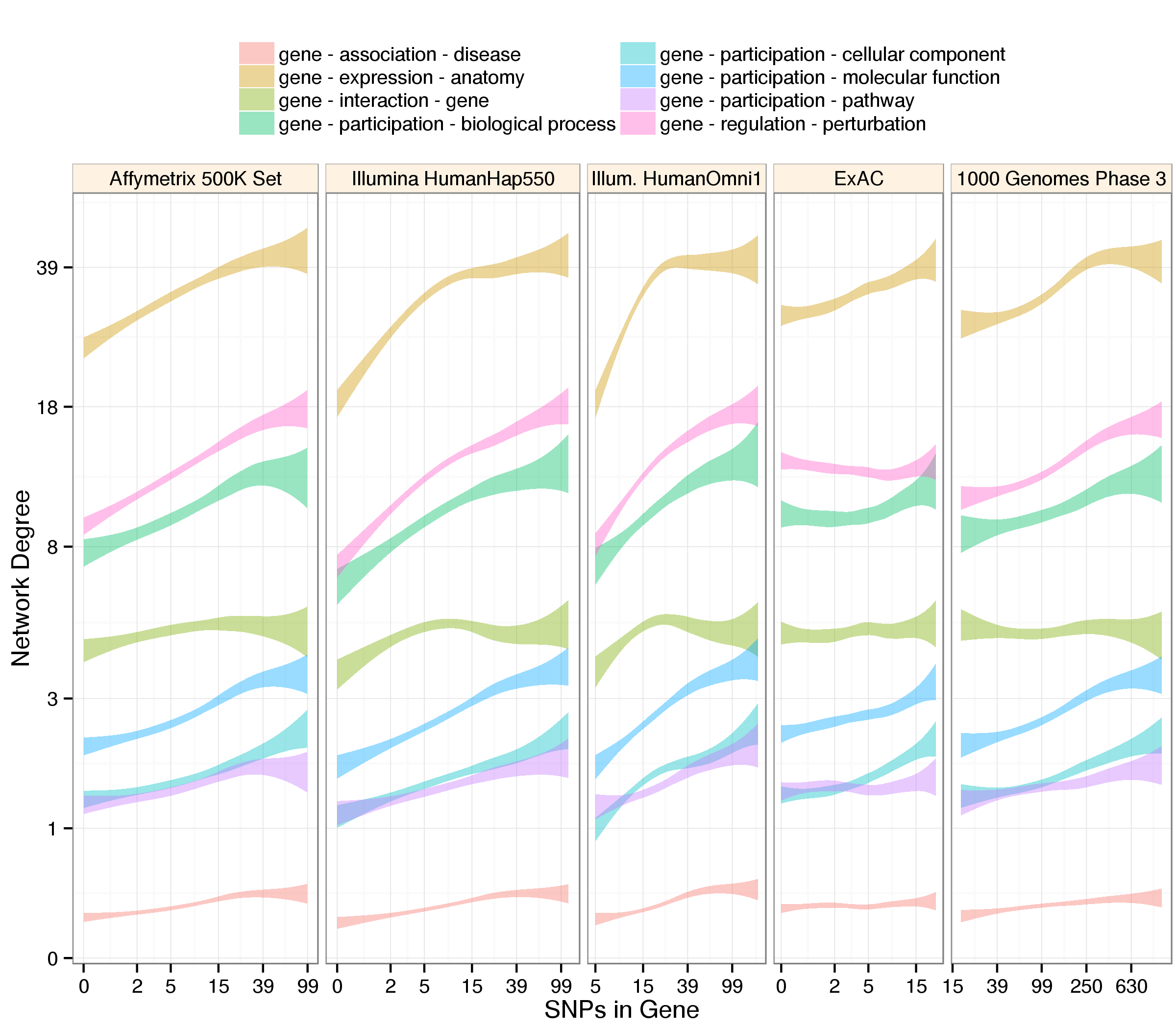| 1. | Python for the modern biodata scientistDaniel Himmelstein, Ola O, Venkat Malladi (2015) Thinklab. doi: 10.15363/thinklab.d84 | | 2. | How should we construct a catalog of drug indications?Daniel Himmelstein, Benjamin Good, Tudor Oprea, Allison McCoy, Antoine Lizee (2015) Thinklab. doi: 10.15363/thinklab.d21 | | 3. | | | 4. | One network to rule them allDaniel Himmelstein, Lars Juhl Jensen (2015) Thinklab. doi: 10.15363/thinklab.d102 | | 5. | The waiting gameKendall Powell (2016) Nature. doi: 10.1038/530148a | | 6. | | | 7. | | | 8. | | | 9. | Understanding multicellular function and disease with human tissue-specific networksCasey S Greene, Arjun Krishnan, Aaron K Wong, Emanuela Ricciotti, Rene A Zelaya, Daniel S Himmelstein, Ran Zhang, Boris M Hartmann, Elena Zaslavsky, Stuart C Sealfon, Daniel I Chasman, Garret A FitzGerald, Kara Dolinski, Tilo Grosser, Olga G Troyanskaya (2015) Nat Genet. doi: 10.1038/ng.3259 | | 10. | | | 11. | One network to rule them allDaniel Himmelstein, Lars Juhl Jensen (2015) Thinklab. doi: 10.15363/thinklab.d102 | | 12. | | | 13. | | | 14. | Rephetio: Repurposing drugs on a hetnet [project]Daniel Himmelstein, Antoine Lizee, Chrissy Hessler, Leo Brueggeman, Sabrina Chen, Dexter Hadley, Ari Green, Pouya Khankhanian, Sergio Baranzini (2016) Thinklab. doi: 10.15363/thinklab.4 | | 15. | Integrating resources with disparate licensing into an open networkDaniel Himmelstein, Lars Juhl Jensen, MacKenzie Smith, Katie Fortney, Caty Chung (2015) Thinklab. doi: 10.15363/thinklab.d107 | | 16. | | | 17. | | | 18. | Rephetio: Repurposing drugs on a hetnet [report]Daniel Himmelstein, Antoine Lizee, Chrissy Hessler, Leo Brueggeman, Sabrina Chen, Dexter Hadley, Ari Green, Pouya Khankhanian, Sergio Baranzini (2016) Thinklab. doi: 10.15363/thinklab.a7 | | 19. | Systematic integration of biomedical knowledge prioritizes drugs for repurposingDaniel S Himmelstein, Antoine Lizee, Christine Hessler, Leo Brueggeman, Sabrina L Chen, Dexter Hadley, Ari Green, Pouya Khankhanian, Sergio E Baranzini (2016) Cold Spring Harbor Laboratory Press. doi: 10.1101/087619 | | 20. | Systematic integration of biomedical knowledge prioritizes drugs for repurposingDaniel S Himmelstein, Antoine Lizee, Christine Hessler, Leo Brueggeman, Sabrina L Chen, Dexter Hadley, Ari Green, Pouya Khankhanian, Sergio E Baranzini (2016) Cold Spring Harbor Laboratory Press. doi: 10.1101/087619 | | 21. | The hetnet awakens at https://neo4j.het.io [poster]Daniel Himmelstein, Antoine Lizee, Pouya Khankhanian, Leo Brueggeman, Sabrina Chen, Dexter Hadley, Chrissy Hessler, Ari Green, Sergio Baranzini (2016) Figshare. doi: 10.6084/m9.figshare.4054902 | | 22. | Integrating resources with disparate licensing into an open networkDaniel Himmelstein, Lars Juhl Jensen, MacKenzie Smith, Katie Fortney, Caty Chung (2015) Thinklab. doi: 10.15363/thinklab.d107 | | 23. | Sounding the alarm on DrugBank’s new license and terms of useDaniel Himmelstein, Katie Fortney, Craig Knox, Christopher Southan (2016) Thinklab. doi: 10.15363/thinklab.d213 | | 24. | Systematic integration of biomedical knowledge prioritizes drugs for repurposingDaniel S Himmelstein, Antoine Lizee, Christine Hessler, Leo Brueggeman, Sabrina L Chen, Dexter Hadley, Ari Green, Pouya Khankhanian, Sergio E Baranzini (2016) Cold Spring Harbor Laboratory Press. doi: 10.1101/087619 |
|




Jesse Spaulding: Just a small correction — Thinklab is tracking views independently of Google Analytics. Our figure attempts to track the total number of humans that have viewed the page. Our figure will be less than what Google Analytics has because for them a unique page view is really the number of sessions with at least one page view.